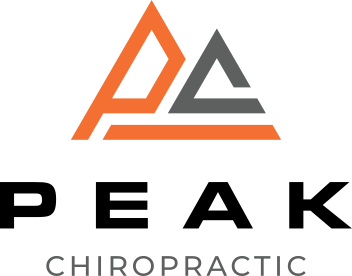If you're dealing with neck pain, you know how it can impact your daily life. Fortunately, there are effective techniques that can help you manage this discomfort. From incorporating specific stretching exercises to making ergonomic adjustments in your workspace, each method offers unique benefits. You might be surprised at how simple changes can lead to significant relief. Curious about which techniques can make the most difference for you? Let's explore the five best strategies that can help you regain comfort and mobility.
Stretching Exercises
Stretching exercises are essential for relieving neck pain and improving flexibility. By incorporating these exercises into your daily routine, you can enhance blood flow to the muscles, reduce tension, and promote better overall mobility.
Start by gently tilting your head to one side, bringing your ear toward your shoulder. Hold this position for about 15-30 seconds, feeling the stretch along the opposite side of your neck. Switch sides and repeat to guarantee both areas receive attention.
Next, try the chin tuck exercise. Sit or stand upright, and gently tuck your chin toward your chest. This helps strengthen the neck muscles and counteracts the forward head posture often associated with prolonged screen time. Hold for a few seconds and release. You can repeat this exercise several times throughout the day.
Another effective stretch is the neck rotation. Slowly turn your head to one side until you feel a gentle stretch. Hold for 15-30 seconds, then rotate to the other side. This movement increases range of motion and helps ease tightness.
Don't forget to focus on your shoulders, too. Shoulder shrugs can relieve tension in the neck area. Simply lift your shoulders toward your ears, hold for a moment, and then release. Repeat this a few times.
Posture Correction
Improving your posture is key to alleviating neck pain and preventing future discomfort. When you sit, stand, or move, being mindful of your alignment can make all the difference. Start by keeping your shoulders relaxed and back, aligning your ears with your shoulders. This simple adjustment helps distribute weight evenly and reduces strain on your neck muscles.
If you spend long hours at a desk, invest in an ergonomic chair that supports your lower back. Your computer screen should be at eye level, so you don't have to tilt your head forward or look down for extended periods. A good rule of thumb is to keep your feet flat on the floor and your knees at a 90-degree angle.
Throughout the day, take short breaks to stretch and reset your posture. Stand up, roll your shoulders, and take a moment to realign. When using your phone, hold it at eye level instead of bending your neck down. It's easy to get lost in your screen, but maintaining a neutral spine is essential.
Additionally, be aware of your posture while sleeping. Use a pillow that supports your neck without forcing it into an unnatural position. Side sleepers should choose a thicker pillow, while back sleepers might prefer a flatter one.
Heat and Cold Therapy
Applying heat and cold therapy can substantially relieve neck pain and promote healing. Both methods have distinct benefits, and using them appropriately can enhance your recovery process.
When you apply heat, it encourages increased blood flow to the affected area, which helps relax tight muscles and alleviate stiffness. You can use a heating pad, warm towel, or even a hot water bottle for this purpose. Just be sure to keep the heat at a comfortable level to avoid burns.
Aim to use heat for about 15 to 20 minutes, allowing your muscles to relax before any further treatment.
On the other hand, cold therapy can effectively reduce inflammation and numb sharp pain. Ice packs or cold compresses work well for this approach. Be sure to wrap the ice pack in a cloth to protect your skin, and apply it for 15 to 20 minutes at a time.
You can use cold therapy immediately after an activity that aggravates your neck pain or after an injury.
To maximize the benefits of heat and cold therapy, you might alternate between the two methods. Start with cold therapy to reduce any swelling, then switch to heat to relax your muscles.
This combination can help you achieve greater pain relief and improve your overall neck function. Remember to listen to your body and adjust the treatment as needed, ensuring you avoid any discomfort or adverse reactions.
Massage Techniques
When it comes to relieving neck pain, massage techniques can be incredibly effective in promoting relaxation and reducing tension. You don't need to be a professional to benefit from these techniques—just a few simple methods can make a noticeable difference.
Start with gentle stroking motions. Use your fingertips to apply light pressure along the sides of your neck. This helps increase blood flow and warms up the muscles. Gradually increase the pressure, using your palms and thumbs to knead the muscles, focusing on any tight spots you find. A circular motion can work wonders, too. Spend a few minutes on each side to give your neck the attention it deserves.
Next, incorporate some stretching into your massage routine. Tilt your head to one side, bringing your ear toward your shoulder while gently applying pressure with your opposite hand. Hold for a few breaths, then switch sides. This can help relieve tightness and improve your range of motion.
You can also use a tennis ball against a wall to target specific trigger points. Lean into the ball, rolling it around to find those sore spots. This self-massage technique is great for releasing deep tension.
Lastly, don't underestimate the power of breathing. As you massage, take deep breaths to help your body relax even more.
Following these massage techniques regularly can lead to significant relief from neck pain, enhancing your overall well-being.
Ergonomic Adjustments
Making ergonomic adjustments in your workspace can greatly alleviate neck pain. Start by evaluating your chair and desk height. Your chair should support your lower back while allowing your feet to rest flat on the ground. If your feet don't touch the floor, consider using a footrest to maintain proper posture.
Adjust your desk height so that your elbows are at a 90-degree angle when typing, preventing strain on your neck and shoulders.
Next, position your computer monitor at eye level. The top of the screen should be at or just below eye level, about an arm's length away. This setup encourages you to keep your head level and reduces the tendency to lean forward.
If you use a laptop, consider investing in a laptop stand or using an external keyboard and mouse to maintain this ergonomic position.
Also, be mindful of your phone use. If you frequently look down at your phone, it can contribute to neck strain. Try holding your phone at eye level or using a headset for calls, which helps keep your neck aligned.
Lastly, take regular breaks. Stand up, stretch, and move around every hour to relieve tension.
Incorporating these ergonomic adjustments into your daily routine can make a significant difference in managing neck pain. You'll not only feel more comfortable but also improve your overall productivity and well-being.
Conclusion
Incorporating these five techniques into your routine can greatly improve your neck pain management. Regular stretching exercises and posture correction can enhance flexibility and alignment, while heat and cold therapy offer soothing relief. Don't underestimate the power of massage techniques to ease tension, and make sure your workspace is ergonomically adjusted to prevent strain. By committing to these practices, you'll likely find long-lasting relief and enjoy a more comfortable, pain-free lifestyle.



